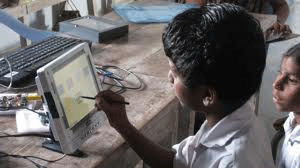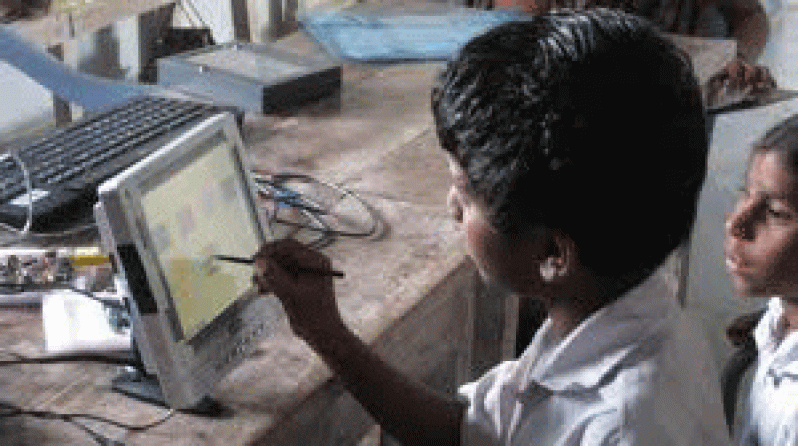THE Guyana Sevashram Sangha yesterday, once again, celebrated Guru Vyas Purnima with chantings in praise to the divine teacher, the Supreme Lord, beginning at 5:30 a.m. and culminating at 6 p.m.  Guru means teacher, and the supreme teacher is Lord Shiva, who has manifested in many forms to serve mankind on earth. Acharya Srimat Swami Pranavanandaji Maharaj (1896 – 1941), who was founder of the Bharat Sevashram Sangha, was one such manifestation. Sevashram is a combination of two words – seva and ashram, which means service and sanctuary.
Guru means teacher, and the supreme teacher is Lord Shiva, who has manifested in many forms to serve mankind on earth. Acharya Srimat Swami Pranavanandaji Maharaj (1896 – 1941), who was founder of the Bharat Sevashram Sangha, was one such manifestation. Sevashram is a combination of two words – seva and ashram, which means service and sanctuary.
From his early childhood Acharya Srimat Swami Pranavanandaji Maharaj, then Binode, had dedicated himself to meditation and service to the Lord and he struggled to overcome hurdles and establish the Sangha, an organisation through which he hoped to serve humanity worldwide, primarily in the area of education and through inculcating spiritual and moral values in the young people of the world.
Oldest Hindu monk from the West, Guruji Vidyanandaji Maharaj, describes him thus: “In some ways he stands most authentically for ancient Hindu values, which can easily be overlooked by modern commentators, scholars, and interpreters of religion.
“Perhaps he is one of the figures whom we ought to take seriously in estimating the power and value of the modern Hindu renaissance, stretching from ancient history to contemporary times.”
It was told of the then Binode that from his very early years he was “drawn to spiritual pursuits and a kind of ascetic athleticism.” His headmaster said that he would give the impression that he had attended school as part of a journey in transition to a higher calling.
Swami Purnanandaji Maharaj wrote of the Acharya that he was consumed with a number of themes, which encapsulate the heart of one main form of Hindu ideal – Bramcharya (ascetic Hindu student) ideal. He wrote, in conjunction with Ninian Smart: “As Hinduism serves, so to speak, as a window on the Acharya, so this life of the Acharya may serve as a window on Hinduism. “First, if his dynamism has helped to create new consciousness within Hinduism, (which may have been the primary catalyst of The Lord’s manifestation), which can lead to religion, then this is something of vital moment to global civilization, in which Hindu values must surely play a major role. Second, his accent on austerity presents an ideal from which many outside India can learn.”
“First, if his dynamism has helped to create new consciousness within Hinduism, (which may have been the primary catalyst of The Lord’s manifestation), which can lead to religion, then this is something of vital moment to global civilization, in which Hindu values must surely play a major role. Second, his accent on austerity presents an ideal from which many outside India can learn.”
In the Sri Sri Guru Mandir at Cove and John during Guru Vyas Purnima last year, learned and holy monk, His Holiness Guruji Swami Vidyanandaji Maharaj said that the attainment of education (in all its dimensions and ramifications) has its roots in absolute faith in the guru, because education is the manifestation of the entire gurukul system, which is grounded in subsuming the individual consciousness to better inculcate the values, mores and lessons being imparted by the guru.
As Master of Ceremonies, Bhaiji Ramnauth said at the Guru Vyas Purnima Puja, wisdom does not merely stem from academic knowledge, but encapsulates an entire spectrum of educational processes, and this was elucidated by Guruji in his discourse, wherein he said that the Vyas is the person who compiled the vedas and all the shastras, including the Mahabharatta. Guruji said that, in the passage of time the divinely prescribed way of the spiritual path was forgotten, but then, whenever such circumstances prevail Lord Shiva manifests himself to restore the sublime glory of dharmic principles, thus was the Acharya incarnated as the embodiment of the Lord.
then, whenever such circumstances prevail Lord Shiva manifests himself to restore the sublime glory of dharmic principles, thus was the Acharya incarnated as the embodiment of the Lord.
Guruji spoke of the many difficulties encountered by the Acharya on his path to self-realization before he founded the Bharat Sevashram Sangha, with the stricture to his adherents to: “Go ye from one end of the world to another and gather all my children under the banner of the Sangha so that they can be saved.” This direction taken by the Acharya in his seva was because, as he said: “I cannot bear to see the degradation of youths any longer”, and the precept of the Sangha is that, according to the Acharya, “An ideal system of education is that which is conducive to the harmonious growth of the body, the mind, the intellect, and the soul of the person who receives the education.”
And this was focal to the establishment of the Guyana Sevashram Sangha at Cove on John in the early 1950’s, which was founded by Swami Purnanandaji Maharaji in obedience to the supreme Acharya on 20 acres of formerly undeveloped land and transformed into its current dynamic and dynamism by the “blood and sweat of the Swamis, Bramcharis, and self-less devotees” over the decades of its existence.
According to Guruji, Guyana is the only country that has produced monks in the western hemisphere; among whom are Guruji himself, who became spiritual head and administrator of the Sangha after the departure of Swami Purnanandaji Maharaj, and who now leads the New York Sangha, Swami Bhajananandaji Maharaj of the Canadian Sangha, Swami Parameshanandaji Maharaj, the Sangha’s Permanent Representative in the United Nations, Swami Nirliptanandaji Maharaj of the London Sangha, Swami Shiveshranandaji Maharaji and Swami Amritanandaji Maharaj, both of the USA; and current spiritual and administrative head of the Guyana Sangha, former Bramchari Vidur and current (after ordination in India in January of this year) Swami Shivashankaranandaji Maharaj.
Guruji has fully immersed himself in spiritual divinity, especially after his parents passed away, leaving him an unschooled orphan at age ten to fend for himself in a logie. Guruji meditated every day and one day, while gazing into the light of the diya, Guruji fell into a trance where he found himself enveloped in a cave-like but holy ambience, with a voice resounding in his consciousness, saying “Come – come to me.”
Swami Purnanandaji Maharaj had been sent by the Bharat Sevashram Sangha to Trinidad, where he was working when he was sent an invitation to establish a mission of the Sangha in Guyana. He came for a brief visit on a one-way ticket but never returned. He had just been gifted land in Cove and John to build the Ashram and Guruji said he immediately recognized that this was his Guru reaching out to him, as was ordained by a Yogi when he was just four years old, so he wrote to the learned monk, who replied and invited him to meet at Pt. Tiwari’s home in Cumberland, Canje in Berbice.
There Swami Purnanandaji Maharaj invited him to join the Sangha, promising nothing but hard work and sacrifice, but Guruji said that this was the moment and the mission for which he was born, so he gave up life as he knew it and journeyed to begin a life of service so intense and meaningful that his influence and breath resounds in the very walls of the buildings of the Guyana Sangha, and in the fulfilled aspirations of thousands of persons whom he taught lessons and moral values in sync with his existential application to prayerful work.
As Bhaiji Ramnauth said, Guruji’s almost six decades in the service to the Sangha and mankind has been a beacon of light to the many devotees and students who have evolved spiritually and academically at the Ashram during the decades of its existence and his life has truly been a reflection of the quintessence of the teachings of the supreme teacher of mankind.
The Sangha believes in educating and empowering girls and, apart from the work being done in its international branches, has 2 basic junior schools, 62 primary schools, 7 higher secondary schools in India, and the only women’s college in Nagaland. It also operates 40 students’ homes with 3881 students, 50 orphanages, 32 free reading libraries, 15 students’ book banks and 4 schools for the children of the slums in Kolkata.
The Pranav Chhrabas free students hostel houses students of Post Graduate Standards of Calcutta University, Jadavpur University University, Ravindra Bharati University, among others. These institutions and programmes are replicated throughout the world. There are also computer and technology training centres, Body and Yoga training centres and shelters for students worldwide.
Scholarships have also been provided by the Sangha for meritorious students, with shelter being provided for students at various locations during examinations and job-seeking activities. The Indian Government has also approved 6 months of E.C.G. training and one year Physiotherapy training at Sangha centres in India.
Vocational and technical courses, such as driving and motor training, tailoring, among other areas of industry have also been factored into the Sangha’s educational system.
In Guyana, along with the original Swami Purnanandaji Primary and Secondary Schools (Hindu College) and Library, there have also been established various other training programmes, including literacy and computer science, with a techvoc centre soon to come on-stream, which is propagating the work started by the supreme Guru Acharya when he first envisioned, then established the Bharat Sevashram Sangha.
Teacher’s Day at the Cove and John Ashram
SHARE THIS ARTICLE :
Facebook
Twitter
WhatsApp





.jpg)








